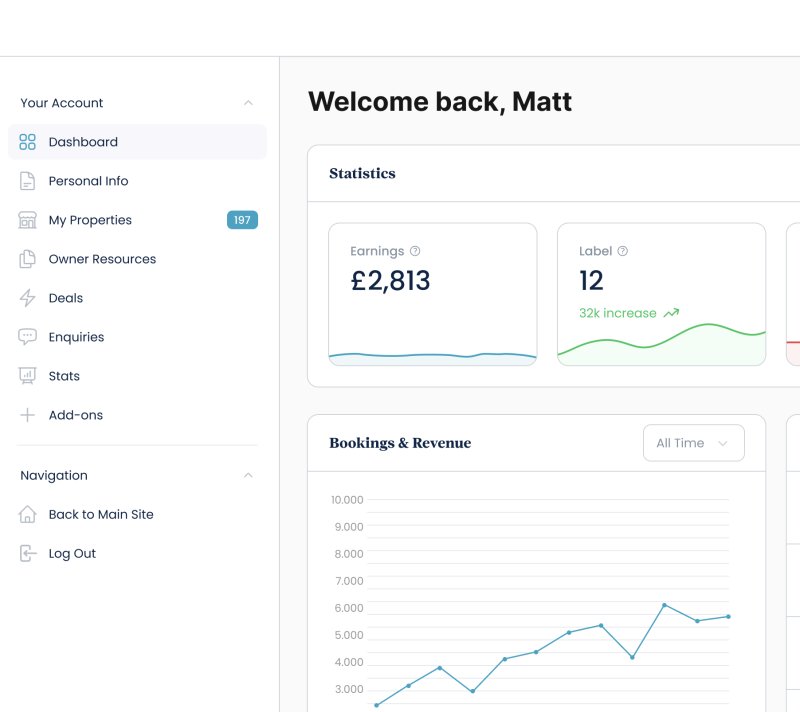Blogs /
8 top tips for your eCommerce website
According to data from the Office for National Statistics, UK online sales in January 2021 accounted for over 35% of all retail, setting a new record and surpassing last May’s high of 34% during the Coronavirus peak.
But with so much competition in the eCommerce space, it can be difficult to establish a successful online presence that converts your visitors into happy customers.
We’ve included a selection of helpful tips below, to help improve your eCommerce website & increase your online sales.
1. Make it easy to navigate around.
Put yourself into your customers shoes and create a website that is tailored around them, and that they will love to shop on. If customers find your website difficult to use, you’ve failed at the first hurdle.
A few things to consider:
- Organise your products in a way that makes them easy to find.
- Create dropdown or mega menus so customers can easily jump between products & categories.
- Ensure a product search is always accessible.
- Include product filters so customers can refine their search by category, price, colour etc.
2. Invest in quality product shots.
When shopping online, customers aren’t able to pick up your products to take a closer look, so it’s vital that your images are of a high quality. Try to include as many images as possible, with different variations & angles to ensure the customer gets a real feel for the product. Bonus points if you can include some interactivity such as image zooming or rotating.
3. Opt for a clean & minimal design.
It’s proven that eCommerce websites with simpler designs have a higher conversion rate. Over-cluttered websites with all the bells & whistles can be distracting for your visitors and mean they miss those important call to actions. Keeping to a minimalistic design with plenty of whitespace will ensure your visitors attention remains focussed on the important content.
4. Make sure your website is fast.
Speed is absolutely critical when running any successful eCommerce website, so much so that 40% of people will likely abandon a website that takes more than 3 seconds to load.
There are many factors that can affect your website performance, but here a few things to keep in mind:
- Try to avoid using an off-the-shelf website theme – Multi-purpose themes/designs are packed full of features that try to cater for all websites, however they can end up dramatically affecting the performance.
- Optimise your images – Make sure images are re-sized & compressed, and if possible utilising a CDN to serve all your assets.
- Minify scripts & stylesheets – Ensure that all scripts & stylesheets are minified & compressed to reduce the file sizes (your developer can help with this).
- Choose a premium hosting option – Hosting isn’t something to do on the cheap, especially with eCommerce. Using a premium hosting provider should massively improve your website speed and mean your customers aren’t waiting around for pages to load.
5. Include your customer reviews.
Customer reviews are a great way of building trust with your visitors, so why not showcase all the feedback from your customers. Display the reviews from your own website or integrate with a third-party reviews provider such as Google, Trust Pilot or Feefo, and this will also help improve your overall website SEO.
6. Clear & visible call to actions.
Strong call to actions are pivotal to converting your website visitors into customers, so don’t hold back on them. The objective for all eCommerce websites is to generate orders, so ensure that is always the main focus and that your customers aren’t distracted.
7. Streamline your checkout process.
How many times have you added a product to your cart, but then either decided to leave it or have been put off by the checkout process? It’s a very common problem with 28% of consumers saying they have abandoned their cart because the process was too complicated.
To reduce your abandoned cart rate, ensure your checkout flow is as slick and streamlined as possible. Reduce the amount of information you ask customers to fill out so you are only collecting the essential details. The longer the process, the more chance they will not complete the order.
8. Mobile experience is key.
With more & more people now shopping using their mobile or tablet device, your website simply must be fully responsive (mobile friendly). Nobody wants to have to keep zooming in and out to view the whole website, it should just work seamlessly no matter what device it is viewed on.
A good mobile experience goes beyond just a basic responsive website though. Utilising other features such as Apple Pay & PayPal One Touch will help boost your mobile conversions even further.













